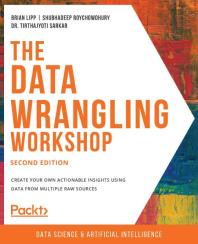

More resources from SP Library.
eBooks
 [E-Book] The Data wrangling workshop : create your own actionable insights using Data from multiple raw sources by
Explore data wrangling with the help of real-world examples and business use cases* Study various ways to extract the most value from your data in minimal time* Boost your knowledge with bonus topics, such as random data generation and data integrity
[E-Book] The Data wrangling workshop : create your own actionable insights using Data from multiple raw sources by
Explore data wrangling with the help of real-world examples and business use cases* Study various ways to extract the most value from your data in minimal time* Boost your knowledge with bonus topics, such as random data generation and data integrity
Books
Databases
|